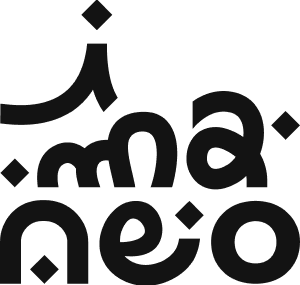(Ohanes, Almería (Spain) 1898-Madrid (Spain) 1961)
Juan Cristóbal González Quesada, Spanish sculptor, is known by his artist name, Juan Cristóbal. Connected to Granada since his childhood, it is there that he will present his first exhibition in 1913. The politician Natalio Rivas notices him and mentors him and facilitates his departure to Madrid. Benefiting from a grant from the City Council and the Province of Granada, Juan Cristóbal moves to Madrid where he begins his studies under sculptor Mariano Benlliure.
In 1917 he exhibits for the first time at the Ateneo de Madrid and soon his talents are recognized and his most important works are often awarded at official salons where he presents them. This is the case with the Second medal awarded to him at the Exposición Nacional de Bellas Artes in 1917 for his work Desnudo acquired by the State and transferred to the Museo Nacional de Arte Moderno. From 1918, commissions and projects follow each other, which will ensure him financial stability. In 1920, at the Exposición Nacional de 1920, an award is given to him for the bronze group of the Monumento a Ángel Ganivet in Granada, part of the ensemble inaugurated in 1921 in the Alhambra forest, executed in a stylized realism and with nuanced symbolism. Another of his works, La noche, a figure of a woman in black marble, will earn him the First medal from the Nacional of 1922, and a few years later, Sibila, also in black marble, will be part of his submission to the 1926 exhibition.
In 1922 Juan Cristóbal is tasked with shaping the elephant head that serves as a bracket for the balcony of the Salto de El Carpio, work of architect Casto Fernández-Shaw.
In 1920, at the Exposición Nacional de 1920, an award is given to him for the bronze group of the Monumento a Ángel Ganivet in Granada, part of the ensemble inaugurated in 1921 in the Alhambra forest, executed in a stylized realism and with nuanced symbolism.
À l’Exposición Internacional de Bellas Artes de Barcelone de 1929, dans le cadre de la grande Exposition universelle de cette année-là, son bronze Maja, un nu de corps entier, remporte la Première médaille. Un autre franc succès était réservé un an auparavant à a demi figure de Cervantes pour le Cuerpo de Inválidos del Ejército, une œuvre en bois doré et peinte, très traditionnelle et moderne à la fois.
Ce sont les années où son large cercle d’amis se retrouve dans son studio. On y rencontre, entre autres, Ignacio Zuloaga, Julio Camba, Julio Romero de Torres, Rafael Penagos, Enrique de Mesa, Anselmo Miguel Nieto, Emiliano Barral, Lorenzo Domínguez, Ramón Pérez de Ayala, ou Casto Fernández-Shaw, cité plus haut.
Très présent dans la vie culturelle et artistique d’Espagne, Juan Cristóbal participe à d’innombrables hommages à des peintres et sculpteurs de son époque, à des évènements solidaires et à une infinité d’initiatives associées au monde des beaux-arts. En 1928, le Gouvernement de l’Union Soviétique l’invite à visiter le pays avec d’autres artistes et intellectuels reconnus. En 1933, il signe avec un groupe important de professionnels, d’écrivains et d’intellectuels espagnols le manifeste de l’association des Amis de l’Union Soviétique.
Après la guerre civile qu’il passe à Madrid, il continue à créer en révisant cependant certaines approches, esthétique et de représentation, auxquelles il s’opposait auparavant, avec ceux de sa génération : naturalisme, l’ébauchage, un certain caractère narratif et même une légère rhétorique du dix-neuvième. Il faut signaler le monumental Cid Campeador a caballo de la ville de Burgos, une commande de la Mairie en 1947, inauguré par Franco en juillet 1955.
Juan Cristóbal continue à faire des bustes et des têtes, presque tous des portraits, reflet de son grand cercle d’amis qui, comme avant la guerre, incluait bon nombre des principaux acteurs de la vie culturelle et sociale de Madrid. En 1958 la Biblioteca Nacional de Madrid lui consacre une exposition monographique.
Pendant les dernières années de sa vie, l’artiste ne ménage pas ses efforts pour acquérir, reconstruire et préserver l’ancien Palais de Villena, à Cadalso de los Vidrios (qu’il avait découvert en 1930) siège actuel du musée Juan Cristóbal qui conserve une partie représentative de l’œuvre de ce sculpteur singulier.
-

El Salto Dam-Bridge and Power Plant
El Carpio, Spain Read more

